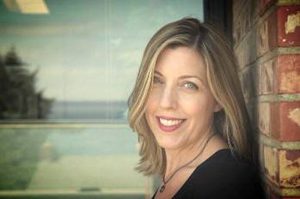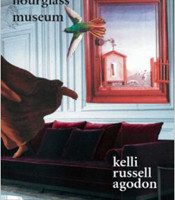I sometimes ask my poetry students what they’ve learned from poems they’ve read along the way, and their answers invariably surprise me. They report learning, among many other things, about “Ohio,” “baseball,” “fishing,” “Christmas,” “Norse mythology,” “wine,” and “squid.” They also report learning about poems from poems:
“I can’t remember who the guy was, but I know he was a poet. I think he had a regular job or something. Anyway, he said, No ideas but in things. I like this thought, so I try to put more things in my poems.”
The guy in question was William Carlos Williams, and the poem is “A Sort of a Song.” I learned from that one, too.
From Archibald McLeish’s “Ars Poetica,” I learned “a poem should not mean but be,” so I stopped trying to explain everything I wrote as I was writing it.
I’m still mulling on Robert Hass’s “Meditation at Lagunitas,” where I learned “a word is elegy to what it signifies.” Likewise on Mary Oliver’s “The Leaf and the Cloud,” where I learned “Maybe the world, without us, is the real poem.”
Here’s what I learned from Kelli Russell Agodon’s new collection, provocatively titled Hourglass Museum: “Poem: a form of negotiation for what haunts us.” I write this proposition on the board for my new students to consider. It becomes a touchstone for our conversations, a lens we use to inspect a variety of poems by a diverse group of poets.
If I turn this lens now to examine the poems in Agodon’s own volume, I see a speaker who is negotiating the related intricacies of time and mortality—two ghosts that haunt us all. Williams would admire the way she has harnessed the idea of time to the hourglass, the idea of mortality to the museum. I admire these yoking of ideas-to-things, too. Agodon yokes the abstract and the concrete often and always with a kind of sensuous precision: “No,/ there was not enough time,” she tells us, “for champagne, for matching//bookends in the library, or even sweeping/ the dog-fur, those sad clouds,/ down the stairs.” Look again: “My younger self was so much more mermaid, /so much more collarbone, not a museum/ of lackluster, an echoing clock ticking.”
The image system that links these poems forms an intricate origami of linguistic relationships. First, the dog-fur is likened to “sad clouds.” Later, our speaker is “on the side of the clouds/ and their quiet disagreement with the sun.” She likens herself to an “echoing clock ticking,” while later even “the moon is just another kind of clock.” So our speaker, if we employ the transitive property we once learned in math, yokes her complex self to both a clock and a moon, a synthetic and a natural marker of time.
I jot in my margin: What have I been missing even in my very own kitchen? Agodon’s prodigious looking lends itself to increasingly fraught ideas-in-things, a litany of haunted couplings. For instance, “The sink is always full/ of disappointment,” and “Inside,//we were considering a life of unopened jars./ So many things we kept shut.” And here is our speaker negotiating with things that haunt her—“windows full of streaks and sheets//too large to fold, […] the silence of the Brillo pad […]”—and the ideas behind them, too: mundaneness, boredom, restlessness, the dawning realization that “the future isn’t what it used to be.”
So who is this book for, you may be wondering? Is it only for women haunted by the entropic demands of domesticity, the felt imperatives of creativity? No. It is not only for them, though there is a special empathy accorded those women who “feel the blade and not the smoothie,” who become “the blender and not the woman//pressing the switch.” This book is also “For everyone who never smiled in school/ photos, for all who’ve wandered city streets//not knowing where they were/or feeling alone.” I think that covers all of us, but if you’re not convinced, consider “Self-Portrait with Reader,” one of my favorite poems.
I often ask my students to choose the “heart poem” of a collection we have read. This is the poem that pumps blood to the rest of the book, that best epitomizes the poet-speaker’s view of the world—her negotiation, if you like, with what haunts her:
To create is not enough.
We must live with our hearts
in our hands—like Mary.
We must hold the blood-
red heart and not be disappointed
when others look away.
Reader, you won’t be disappointed with this book, I promise. You will learn so much about looking, within the self and beyond. You will glean the wisdom of someone who has been writing her way toward a deeper knowing for a long time, then showing what she has learned simply and artfully through the things of this world. For instance: “The future is a paper airplane hitting me in the face.//It never lands softly.”
Agodon will show you how to see yourself in that world, that precarious future. These poems are, at least in part, perspective lessons:
See the glow in the window
and want to be that glow.
See one person reaching for another.
Be the silhouette behind the shade.
 They are also, at least in part, a new and exciting vision of ekphrasis. Remember reading John Keats’s “Ode on a Grecian Urn” (1819) in your high school British lit class? Or W.H. Auden’s “Musée des Beaux Arts” (1938) in your college modern poetry seminar? Ekphrasis, from the Greek meaning “description,” has historically referred to a poem that describes and perhaps also interprets, perhaps also meditates upon, a work of visual art. Agodon takes the spirit of ekphrasis and unites it with a confessional impulse: to reexamine her own life in light of visual art, and in so doing, to illuminate the idiosyncratic responses we have as we step inside a museum, or open an art book, or consider a reproduction on a living room wall.
They are also, at least in part, a new and exciting vision of ekphrasis. Remember reading John Keats’s “Ode on a Grecian Urn” (1819) in your high school British lit class? Or W.H. Auden’s “Musée des Beaux Arts” (1938) in your college modern poetry seminar? Ekphrasis, from the Greek meaning “description,” has historically referred to a poem that describes and perhaps also interprets, perhaps also meditates upon, a work of visual art. Agodon takes the spirit of ekphrasis and unites it with a confessional impulse: to reexamine her own life in light of visual art, and in so doing, to illuminate the idiosyncratic responses we have as we step inside a museum, or open an art book, or consider a reproduction on a living room wall.
“If My Life Were a Canvas, It Would Be a Jackson Pollock Paint-By-Number” introduces this thread near the beginning of the book. This poem alone provides an ideal writing prompt for my own students, who are challenged to complete “If My Life Were a Canvas, ___________” and thus to begin their own negotiation with a work of art upon the page. Joseph Cornell is here, and Frida Kahlo, and Pablo Picasso, and Andy Warhol, just to name a few. When I told you “Self-Portrait with Reader” is one of my favorite poems, I forgot to mention that “Notes” at the end of the book is one of my other favorite poems. That is to say, I come to the end, and there is more to learn via poetic appendix, more to discover about the other artist-ghosts haunting this book: Mark Rothko, Diego Rivera, Salvador Dali, Roy Lichtenstein, just to name a few.
Remember when DVDs had Easter eggs, a secret menu with bonus footage that gave the viewer an unexpected reward? Hourglass Museum, with all its rewards, offers AFTER HOURS DINING AT THE HOURGLASS CAFÉ, four extra poems that can be accessed through links for appetizers, entrees, drinks, and dessert. Agodon has already told us, “The hourglass museum remains unfinished,” but here it is, still expanding right before our eyes—even to the final page of this volume and then beyond that page.
Here I think of Edgar Degas, a painter I love, and how his ballerinas were depicted in motion, dancing off the stage, only half a tutu visible there at the canvas edge.
So it is with Agodon’s additional poems. We follow her off the stage, the page, past the ending that is never really—could never really be—an ending. One tantalizing morsel of what’s waiting there, in the ghostly periphery of this book:
In a busy world, the sour experience
is not the lemon, but forgetting
to taste it.
Savor everything, including this book.




